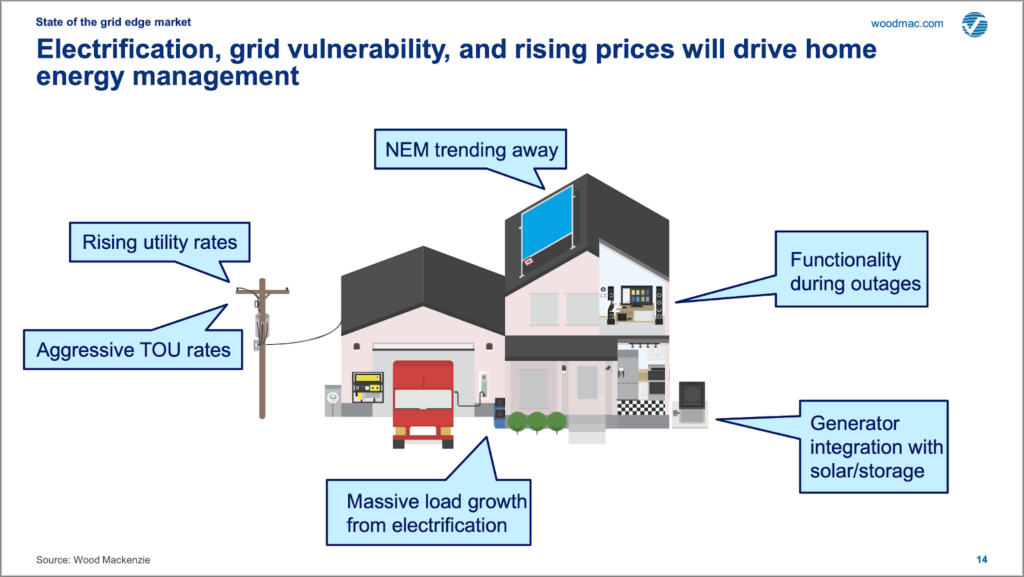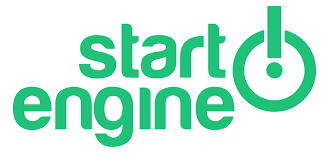Home Energy and Power Management Megatrends | Part 1 of 3
Part of the YouSolar team spent the past two days in Phoenix, AZ, attending the Grid Edge Innovation Summit 2022. The conference has been a great opportunity to network, learn and discuss major trends and developments with industry peers. We were also thrilled to see that YouSolar’s PowerBloc® is the right product at the right time.
Among the interesting panel discussions and presentations around grid modernization, Distributed Energy Resources (DERs), and electric vehicles (EVs) was this slide from conference organizer and consulting firm Wood Mackenzie that stood out the most for us: a graphic summarizing the major trends that are already driving YouSolar’s business and will continue to do so over the coming years.

Graphic courtesy of Wood Mackenzie.
The drivers are:
-
Electrification of the home, where gas appliances are replaced by electric ones like induction cooktops and heat pumps;
-
Grid vulnerability that causes outages of utility power; and
-
Rising prices for electricity.
We see the same drivers as the reasons why our customers buy the PowerBloc®.
Let’s take a closer look at these trends, which fall into two broad categories: first, what happens outside the home, i.e. on the supply side and at the policy level (“in front of the meter”), and second, what happens in the home, on the demand side (“behind the meter”).
Trends Outside the Home
-
Rising Utility Prices: Even as many forms of renewable energy generation have become cheaper than fossil generation, utility rates will only know one direction for many years, and that is upward. The main reason for this trend is the enormous investments required to modernize the transmission and distribution infrastructure. As an example, Pacific Gas & Electric (PG&E) earmarked only 4% of its infrastructure budget for grid modernization in 2019. According to Wood Mackenzie, their current proposal for 2023 has this number at 24%.
-
Aggressive Time of Use (TOU) Rates: As renewable sources, which are intermittent by their nature, take over a steadily growing percentage of the energy mix, it will become ever more critical to use energy smartly at the times when it is available. Utilities will have to drive consumer behaviour by disincentivizing energy use at peak hours and shifting the demand to match the supply with increasingly differentiated TOU rates where energy cost varies significantly by the time of day and weekday. Customers with home battery systems can use this trend to their advantage by powering their homes from batteries when rates are high.
-
Net Energy Metering Is Trending Away: Net Energy Metering (NEM) allows consumers to send energy back to the grid at any time at the same rate the utility charges, netting out their consumption with their solar production. NEM has been a great incentive to drive the adoption of residential solar, but the result is that millions of households now sell energy to the grid during the sunny mid-day hours when energy is so abundant that wholesale electricity prices can become negative. Negative prices mean that utilities pay customers to take the power. NEM has been a crucial policy instrument to kickstart solar, but it does not work once solar adoption reaches a certain level. States and countries where residential solar adoption has already reached high levels have started to dial back these schemes, for example in Germany, or are in heated discussions about doing so without damaging the residential solar industry, such as in California.
In one of our next updates, we will look at the second group of trends: What’s going on inside the home.
We will conclude this mini-series with an analysis of how all these trends drive the adoption of YouSolar’s residential electricity storage and resilience solutions.
